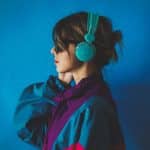The growing use of artificial intelligence (AI) for image generation is causing both fascination and concern. This technology provides increased efficiency, enabling the rapid creation of realistic and personalized images. However, it also raises questions about ethics, quality and reliance on automation in visual creation. Thus, exploring the pros and cons of using AI for image generation is essential to fully understanding the impact of this technology. Here is a guide that takes stock.
The benefits of using artificial intelligence to generate images ?
Artificial intelligence provides a multitude of benefits when used to generate images. It offers considerable efficiency by enabling the rapid and automated creation of high-quality images. Below are detailed details of all the benefits linked to using the AI of https://www.myimagegpt.com/ to generate images.
A lire en complément : What are the practical guides for using chatbots ?
Improved creativity and innovation
Using artificial intelligence to generate images offers unprecedented potential to drive creativity and innovation. AI algorithms can explore large and complex design spaces, coming up with unexpected new ideas.
This allows artists and designers to push the boundaries of their imagination by exploring styles and shapes they might not otherwise have considered. By leveraging the capabilities of AI to generate images, creators can quickly generate iterations. Better yet, they can experiment with different variations and explore avant-garde concepts.
En parallèle : How Can AI Assist in Historical Document Preservation and Analysis?
Automation of tedious and repetitive tasks
AI can automate many tedious and repetitive tasks related to image generation. For example, image editing, object segmentation, or even the creation of prototypes can be accelerated and simplified using AI.
This frees up time for creative professionals. The latter can thus focus on more strategic aspects of their work, such as conceptualization and artistic decision-making. Additionally, automation reduces potential human errors, ensuring more consistent and higher quality results.
Adaptability to needs and preferences
Artificial intelligence for image generation offers high adaptability to user needs and preferences. Algorithms can be trained on specific datasets.
This allows results to be customized based on the particular requirements of a project or user. The generated images can be tailored to specific styles, colors or compositions, meeting the varied needs of different application areas, such as:
The advertisement ;
Product design;
Visual art.
This adaptability also makes it possible to explore new aesthetic territories and respond to changing market trends.
Exploration of new perspectives and new forms of expression
Artificial intelligence opens the way to exploring new perspectives and new forms of artistic expression. Algorithms can generate surprising and unique images, challenging traditional conventions and stimulating creative thinking.
By encouraging experimentation and offering new possibilities, AI promotes the emergence of innovative artistic styles and new approaches to design. This allows artists and creators to push the boundaries of art and creativity, opening the way to new forms of expression and new visual experiences for audiences.
The disadvantages of using artificial intelligence to generate images
Although there are undeniable advantages to using artificial intelligence to generate images, it also has several significant disadvantages. Here is a list of the different disadvantages of this practice.
Loss of human aspect and originality
The use of artificial intelligence to generate images can lead to a loss of human aspect and originality in artistic creation. Algorithms are often based on pre-existing models, which can lead to a homogenization of styles and ideas. This standardization can reduce the diversity and uniqueness of the works produced, thereby diminishing their artistic value and emotional impact.
Risk of perpetuation of biases and stereotypes
AI algorithms used to generate images can incorporate and perpetuate biases and stereotypes present in the training data. For example, if the datasets used to train the models are biased in terms of gender, race, or culture, the images generated may reflect these biases.
Increased reliance on technology and algorithms
The widespread use of artificial intelligence to generate images may lead to increased reliance on technology and algorithms. Creative professionals can become overly reliant on AI tools, which can limit their ability to develop their own skills and artistic intuition. In addition, a technological breakdown or algorithm failure can paralyze artistic production, jeopardizing the continuity of creative projects.
















